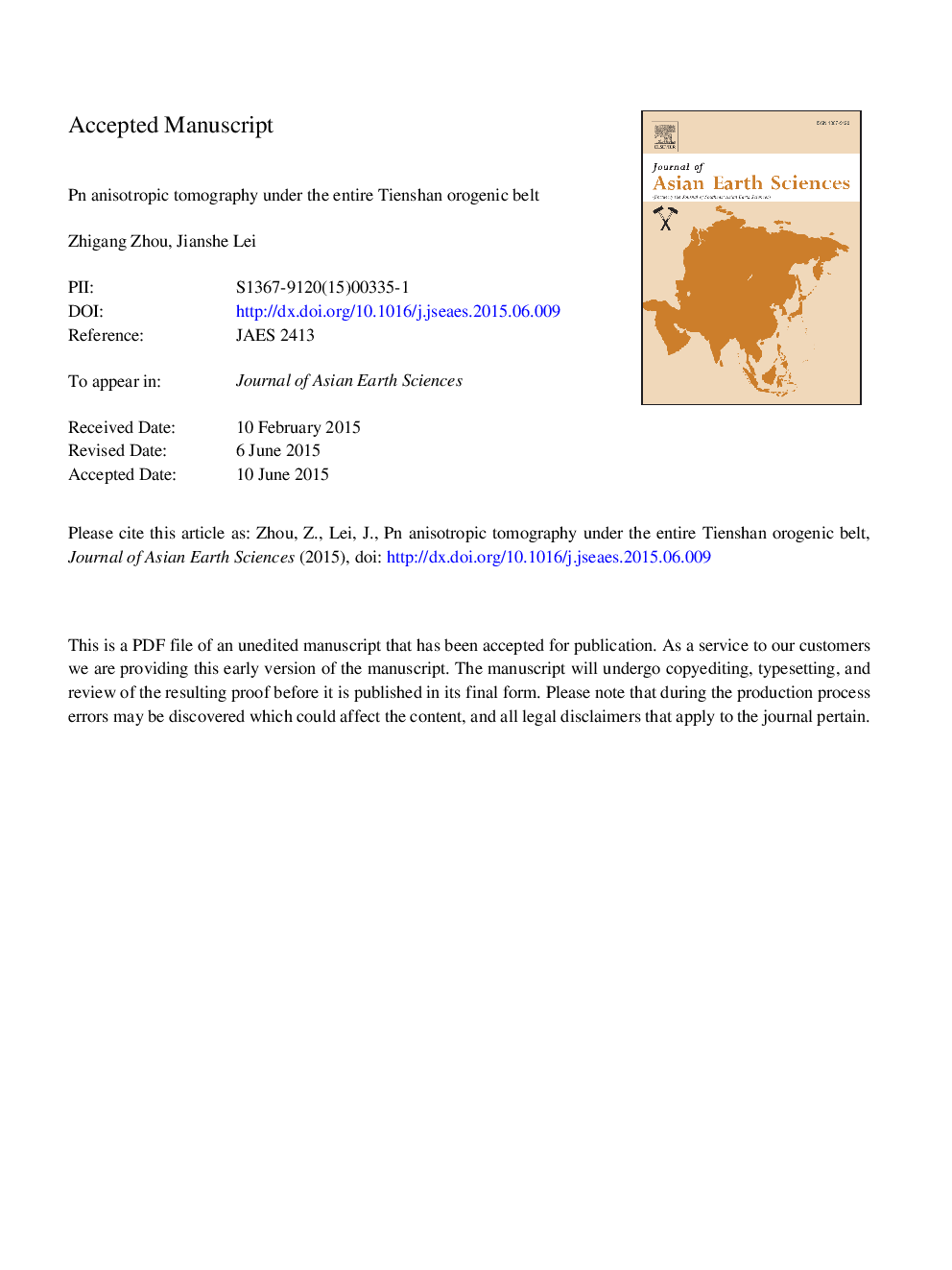| Article ID | Journal | Published Year | Pages | File Type |
|---|---|---|---|---|
| 6444205 | Journal of Asian Earth Sciences | 2015 | 46 Pages |
Abstract
We present a new anisotropic tomography of the uppermost mantle under the Tienshan orogenic belt and surrounding regions using a number of Pn arrival-time data hand-picked from portable seismic stations and chosen from the Xinjiang provincial observation bulletins and the EHB datasets. Our results exhibit prominent lateral heterogeneities in the study region. Distinct low-velocity anomalies are visible under the tectonically active regions, such as the Tienshan orogenic belt and western Kunlun Mountains, whereas pronounced high-velocity anomalies are imaged beneath the stable blocks, such as the Kazakh shield, the Junggar, Tarim, Qaidam, and Turpan-Hami basins, and the Tajik depression. Most strong earthquakes (Ms > 7.0) are mainly distributed along the transition zone of high to low velocity anomalies, suggesting a possible correlation between the strong earthquakes and the upper mantle structure. The fast directions of Pn anisotropy beneath the Tienshan orogenic belt are generally parallel to its striking orientation, whereas those beneath Pamir show a northward arc-shaped distribution. The Pn fast-velocity directions on the boundaries of the Kazakh shield and the Tarim and Junngar basins are approximately perpendicular to the strike of the Tienshan orogenic belt. By integrating with previous findings, our results suggest that the Tarim and Kazakh lithospheric materials could have underthrusted beneath the Tienshan orogenic belt that leads to the hot mantle material upwelling under the Tienshan orogenic belt, which is attributable to the Indo-Asian collision. These dynamic processes could play important roles in the Tienshan mountain building.
Related Topics
Physical Sciences and Engineering
Earth and Planetary Sciences
Geology
Authors
Zhigang Zhou, Jianshe Lei,
